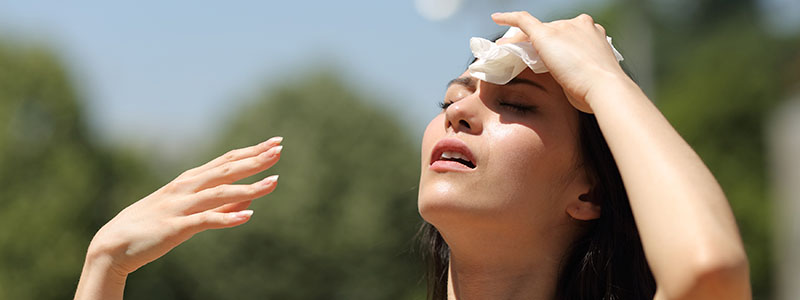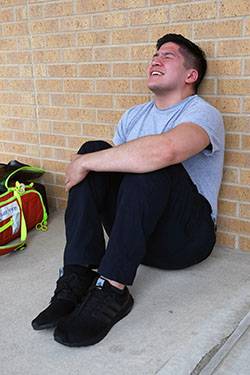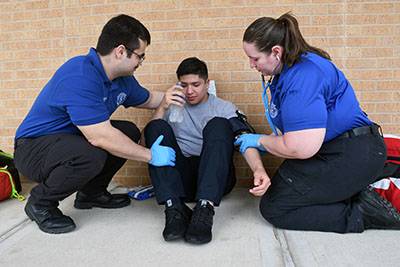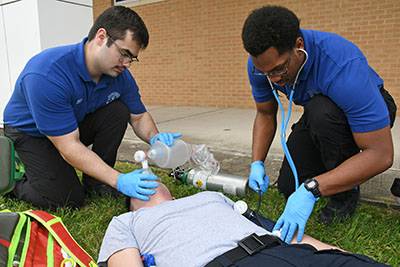4 Myths You Should Know About Beating the Heat

True or false?
- Your body overheats more in dry heat, not humid.
- You can’t suffer heat exhaustion while swimming.
- Drink once you feel thirsty.
If you answered true to any of these, think again.
San Jacinto College’s Kristine Kern, emergency medical services program instructor, busts myths about preventing and responding to the top three heat-related illnesses.
Heat cramps are muscle pain/spasms with heavy sweating that follow intense activity. These can progress to heat exhaustion, when you still sweat but also experience headache, dizziness, nausea, vomiting, clammy skin, and more. With life-threatening heat stroke, your body can no longer sweat to cool off. Your temperature climbs to 103 degrees or higher, and you may pass out.
Do you know how to beat the heat?
Myth 1: I don’t have to worry until Texas heat reaches triple digits.

If you fall and are lying on the asphalt, that can be 20-30 degrees hotter than the ambient air. The inside of parked cars is even warmer — about 40 degrees hotter than the outside temperature. Both of those scenarios can be dangerous when it’s 80 degrees outside.
But we should stay especially vigilant in Texas summers. In high heat and humidity, our bodies don’t manage temperature as well.
Myth 2: I won’t suffer heat exhaustion if I’m swimming.
Kern: We breathe water out of our body. When you’re thirsty, you’re probably dehydrated and already behind the ball.
From the beach to the pool, you should remain hydrated, stay covered, and don’t do things that cause sunburn.
Myth 3: I should pour cold water on someone who is experiencing heat exhaustion/stroke.

Have them sit down, drink cool water, and eat fruit like grapes and oranges for electrolytes. Don’t let them resume activities. Don’t give any drink to someone who is unconscious.
Call 911 if someone is suffering heat stroke, and call if you’re alone and already suffering heat exhaustion.
Myth 4: Heat stroke won’t happen to me.

- Have cold water readily available in your fridge or in a cooler in your car.
- Keep a Ziploc bag with wet washcloths in your fridge. Put them on your neck if you’re working outside.
- Watch the heat index and avoid working or exercising outside from 12-5 from April through September.
- Wear clothes that wick and dry quickly to keep you cool.
Start every day ahead — drink water all the time in Texas. Don’t go over your limits and try to be Superman. It’s hot here. Get out of the heat when you need to, not when it’s too late.
Path to Paramedic
Want to help others in a fast-paced work environment with job security? In two years, you can earn your degree and become a paramedic through San Jacinto College’s emergency medical services program. With continued education, advance your health career as a nurse, physician assistant, anesthesiologist, and more. A Texas Department of State Health Services EMS scholarship currently covers tuition, books, and materials for EMT and paramedic training.
Contact sylvia.gallegos@sjcd.edu for more information.
